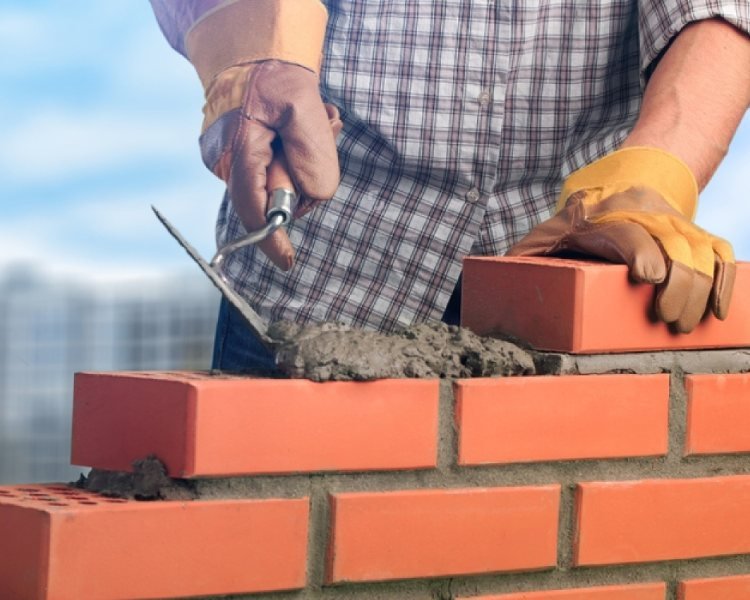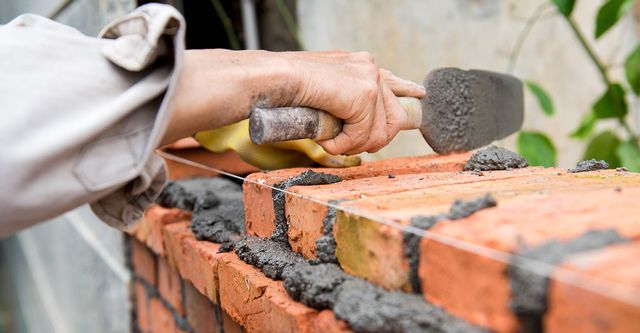Trustworthy Chimney Services: Maintenance and Repair Works Done Right
Trustworthy Chimney Services: Maintenance and Repair Works Done Right
Blog Article
Unlocking the Keys of Lasting Masonry Building Practices for Eco-Friendly Buildings
In the realm of contemporary construction, the search of sustainable practices has come to be critical. Among the myriad techniques to eco-friendly building, sustainable masonry building and construction stands apart as a time-tested and resilient approach that holds a wealth of untapped possibility. From the selection of products to innovative building methods, the secrets to attaining sustainability within stonework construction are diverse and fascinating. By checking out the benefits, materials, strategies, and future fads of sustainable masonry, a deeper understanding of how these practices can form the future of environmentally friendly structures emerges.
Advantages of Sustainable Masonry Building
Welcoming lasting stonework building techniques not only decreases ecological impact but additionally provides long-term economic benefits to contractors and areas. By utilizing products like recycled blocks, blocks, and rocks, home builders can dramatically reduce the carbon impact of their jobs while promoting source efficiency. Furthermore, lasting masonry construction techniques, such as appropriate insulation and thermal mass residential properties, can boost energy effectiveness within buildings, leading to decreased functional expenses over time.
In addition, the toughness and strength of stonework frameworks contribute to long-lasting financial advantages. Structures built utilizing sustainable stonework methods commonly require less maintenance and repair work, equating to set you back financial savings for building contractors and homeowner. The durability of masonry materials also ensures that frameworks remain stable and secure, reducing the demand for frequent renovations or substitutes.
Eco-Friendly Masonry Materials
Making use of environment-friendly masonry materials is a crucial step towards boosting the sustainability of construction methods and reducing ecological influence while making best use of long-term financial advantages. Lasting masonry materials are sourced, created, and utilized in a manner that minimizes overall environmental effect. Lasting concrete obstructs include recycled accumulations and may include enhanced insulation buildings, adding to energy efficiency in buildings.
Additionally, natural materials like adobe, rammed planet, and straw bundles offer excellent thermal mass homes, minimizing the demand for heating and cooling energy. These materials are commonly in your area offered, advertising local economic situations and reducing transportation-related carbon discharges. By choosing green stonework products, building and construction tasks can significantly reduce their ecological impact and add to the creation of much healthier, more sustainable built atmospheres.
Energy-Efficient Masonry Techniques
Power performance plays an essential role in boosting the sustainability of stonework building methods. By executing energy-efficient stonework strategies, builders can significantly lower the total energy consumption of a structure, leading to reduced operational costs and auto cars a smaller sized environmental footprint. One vital energy-efficient stonework technique is using thermal mass, which involves including dense materials like concrete or brick into the structure's structure to soak up and keep heat. This assists control indoor temperature levels, lowering the requirement for mechanical heating and cooling down systems.

Advancements in Lasting Masonry
Current improvements in lasting stonework practices have actually brought around ingenious methods that are reshaping the building industry. One such development is the advancement of self-healing concrete, which uses microorganisms embedded within the concrete to recover splits autonomously. This innovation not just minimizes maintenance costs but also improves the durability of masonry frameworks, adding to their sustainability.
An additional remarkable development is the use of recycled accumulations in stonework construction - masonry contractor. By integrating materials such as crushed ceramic waste or recycled glass right into concrete blends, contractors can reduce the the original source environmental influence of construction projects while keeping structural integrity. This technique not only diverts waste from garbage dumps but additionally saves natural sources, making it a crucial development in sustainable stonework construction
Furthermore, the assimilation of electronic design devices, such as Building Details Modeling (BIM), is reinventing the way stonework structures are intended and created. BIM permits even more specific calculations, lowered material wastefulness, and improved power efficiency, inevitably resulting in even more sustainable structure practices. These technologies collectively symbolize an appealing future for sustainable masonry building and construction in the age of eco-friendly structures.
Future Trends in Stonework Sustainability
With the ingenious strides made in lasting stonework techniques, the future patterns in link masonry sustainability are positioned to further change the construction market. Among the key fads shaping the future of stonework sustainability is the increased combination of modern technology. Developments such as Building Details Modeling (BIM) and digital truth simulations are being used to optimize masonry building procedures, leading to decreased material waste and enhanced power performance in structures.
In addition, the growth of novel sustainable products is established to play a considerable function in boosting the eco-friendliness of masonry building and construction. masonry contractor. Advancements like self-healing concrete, recycled accumulations, and bio-based binders are obtaining traction for their ability to decrease environmental influence while keeping structural integrity

Conclusion
Finally, lasting masonry construction techniques provide numerous advantages for environment-friendly buildings. By making use of environment-friendly materials and energy-efficient techniques, stonework can contribute to an extra sustainable built setting. Technologies in lasting masonry are continually being established to further boost the environmental efficiency of buildings. Looking in the direction of the future, the trend of masonry sustainability is anticipated to grow, bring about even more eco-friendly and energy-efficient construction methods in the years ahead.
Report this page